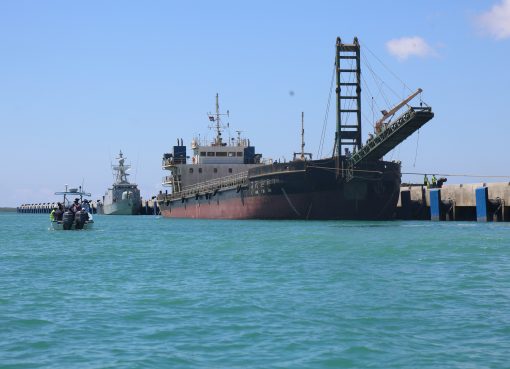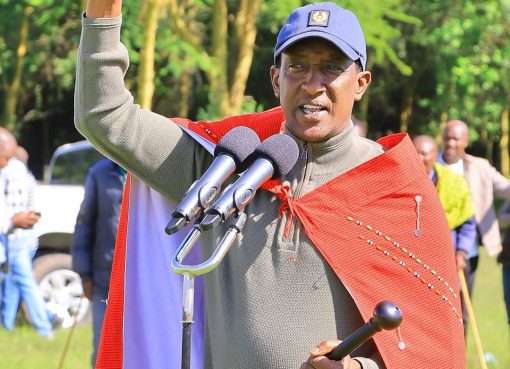Uasin Gishu County Government in collaboration with the National Environmental Management Authority (NEMA) and other partners have joined hands to conserve and protect wetlands across the county which are slowly disappearing due to encroachment and human activities.
World’s Wetlands Day is celebrated on February 2nd, which also marks the Anniversary of the Ramsar Convention on wetlands, adopted as an international treaty in 1971 at Ramsar in Iran to which which Kenya is a signatory.
The county administration together with NEMA and other partners on Wednesday conducted a clean-up exercise in Sosiani River which serves majority of residents across various estates in Eldoret.
Speaking during the clean-up exercise along River Sosiani near Forest Tree Nursery in Eldoret town, Uasin Gishu County Executive Committee Member (CECM) for Water, Environment Sanitation, Climate Change, Energy and Natural Resources, Mr. Abraham Serem, decried that the environment around the municipality of Eldoret is heavily polluted due to high rate of human activities.
“We chose to start with River Sosiani because like many other wetlands around Uasin Gishu, it passes through town and thus it is heavily polluted. The county in conjunction with other institutions will engage in a continuous clean-up exercise in the river,” said Serem.
Noting that every citizen is entitled to have access to a clean and healthy environment, the CECM reiterated that the wetlands need to be conserved and protected from encroachment by people who end up polluting it through human activities.
He noted that the county administration had made commendable steps in coming up with laws and policies in line with the national environmental laws, to ensure the environment is conserved and protected.
Serem noted that people had been unmindful of the laws and ended up encroaching on the riparian land along the river and tend to carry out activities that are unfriendly to the environment like cutting down trees and discharging hazardous liquid and solid wastes into the river.
“It is a responsibility for all of us to conserve and restore the riparian lands. Wetlands are disappearing faster than the forests. For example, in Uasin Gishu, the so many wetlands that we used to have in 1980s and 1990s are no longer there mainly due to human activities,” he said.
As a measure to conserve and protect the wetlands, the CECM further said that the governor has instituted a task force that will work together with the Ministry of Lands to map out wetlands areas across the county to see how they can be cleaned, how the encroached riparian land can be recovered and a better mechanism to reduce human activities around Sosiani River.
On her part, Uasin Gishu County NEMA Director of Environment, Sally Kibos pointed out that the Authority with other partners carried out the clean-up exercise towards celebrating world wetlands day on the 2nd of February, in response to deliberations arrived at globally under the UN forum that the wetlands were being lost at a faster rate in 1971.
“What we want to project as people of Uasin Gishu is that every wetland near you is gold if you utilize it well, you may grow your vegetables there, and you may graze your animals around there during the dry season. If we keep our wetlands intact, we are sure of an economy that is sustainable because wetlands store and clean water for us, purifies the air by utilizing excess carbon dioxide from the atmosphere, hence moderate the issues of climate change,” said Kibos.
She noted that Wetlands are a very vital natural resource and all the natural resources departments are involved in it, like the Kenya Forest Service (KFS) who advise the public on which tree species is suitable for certain area, The Kenya Wildlife Service (KWS ) who implement Ramsar Convention on Wetlands (1971),Water Resources Authority who have the mandate to control how much water is drawn from a resource and as well measuring or mapping the size of that wetland and the NEMA which does the regulation.
By Ekuwam Sylvester




